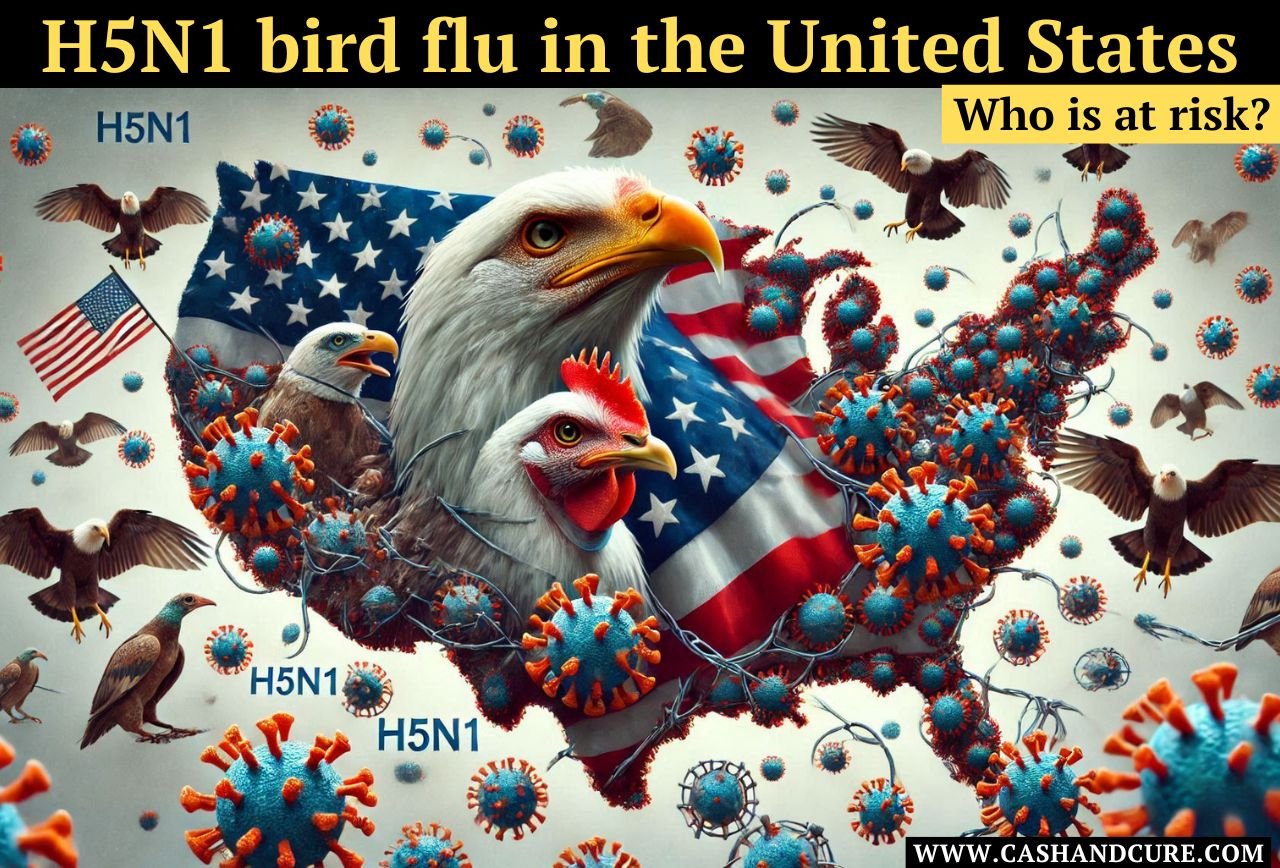H5N1 bird flu in the United States: Who is at risk? The H5N1 bird flu, also known as avian influenza, is becoming a significant concern globally due to its ability to cause severe illness in both birds and humans. Recently, the United States has reported its first severe human case of H5N1 bird flu, causing alarm across the world and necessitating a closer look at the situation. This blog post explores the complete information about the H5N1 bird flu in the United States, discussing the feelings and experiences of the affected people in depth so that appropriate action is taken.
H5N1 bird flu in the United States

The science behind the H5N1 bird flu
The H5N1 bird flu is a highly pathogenic avian influenza virus that primarily affects birds but also infects humans and other animals. The virus was first identified in 1996 in geese in China and has since caused several diseases in poultry and wild birds worldwide. The H5N1 virus is known for its high mortality rate in birds and its ability to cause severe respiratory illness in humans.
The virus spreads through direct contact with infected birds, their feces, or contaminated surfaces. Infected birds release the virus in their saliva, mucus, and feces, which contaminates the environment and causes further spread. Human infection usually occurs through close contact with infected birds or their secretions.

Recent developments in the United States
In December 2024, the Centers for Disease Control and Prevention (CDC) confirmed the first severe human case of H5N1 bird flu in the United States. The patient, who was hospitalized in Louisiana, had been exposed to dead birds. This case is an important event, as it highlights the potential for the virus to cause severe illness in humans in the U.S.
Since April 2024, a total of 61 human cases of H5 bird flu have been reported in the United States. Most of these cases are associated with direct contact with infected poultry or dairy cows. The CDC has emphasized that while the risk to the general public is low, people who come into contact with or work with infected animals should take precautions.

Mental impact on residents
The confirmation of H5N1 bird flu cases in the United States has sparked a variety of emotions among residents:
- Anxiety and fear: The possibility of a serious disease like H5N1 bird flu spreading to humans has sparked anxiety and fear. Residents are concerned about health risks and the possibility of a large outbreak.
- Preparedness and vigilance: Many residents are taking the situation seriously and prioritizing preparedness. They are keeping up with the latest developments, following recommended precautions, and making sure they have the necessary supplies on hand.
- Community support: This situation has also brought communities together. Neighbors are checking on each other, offering help, and providing support to those who may be more vulnerable to the virus.
Actionable advice for residents
- Stay informed: Keep an eye on updates from reliable sources like the CDC, local health departments, and reputable news outlets. Staying informed helps you understand the situation and take appropriate action.
- Follow precautions: If you work with birds or are in close contact with them, follow recommended precautions to reduce the risk of infection. This includes wearing protective gear, practicing good hygiene, and avoiding contact with sick or dead birds.
- Report suspected cases: If you see sick or dead birds, report them to local authorities immediately. Timely detection and reporting help prevent the spread of the virus.
- Prepare an emergency kit: Prepare an emergency kit with the necessary equipment and supplies, including food, water, medications, and hygiene products. Having a kit ready helps you be prepared in case of an outbreak.
- Stay healthy: Maintain a healthy lifestyle to support your immune system. This includes eating a balanced diet, exercising regularly, and getting enough sleep.

FAQs: H5N1 bird flu in the United States
H5N1 bird flu is a highly pathogenic avian influenza virus that primarily affects birds but also infects humans and other animals. It is known for its high mortality rate in birds and its ability to cause severe respiratory illness in humans.
The virus spreads through direct contact with infected birds, their feces, or contaminated surfaces. Infected birds release the virus in their saliva, mucus, and feces, which contaminates the environment and also causes further spread.
Symptoms of H5N1 bird flu in humans include sore throat, cough, fever, runny or stuffy nose, headache, muscle or body aches, fatigue,e and shortness of breath. Severe cases lead to pneumonia, acute respiratory distress, and other complications.
To protect yourself from H5N1 bird flu, avoid contact with sick or dead birds, practice good hygiene, and follow recommended precautions if you work with or are in close contact with birds.
There is currently no widely available vaccine for H5N1 bird flu. However, researchers are working on developing vaccines to prevent the virus. In the meantime, antiviral medications are used to treat infected individuals.
If you suspect you have H5N1 bird flu, consult a doctor immediately. Inform your healthcare provider about your symptoms and the possibility of exposure to infected birds. Follow their guidance and take the necessary precautions to prevent the spread of the virus.


Leave a Reply
You must be logged in to post a comment.